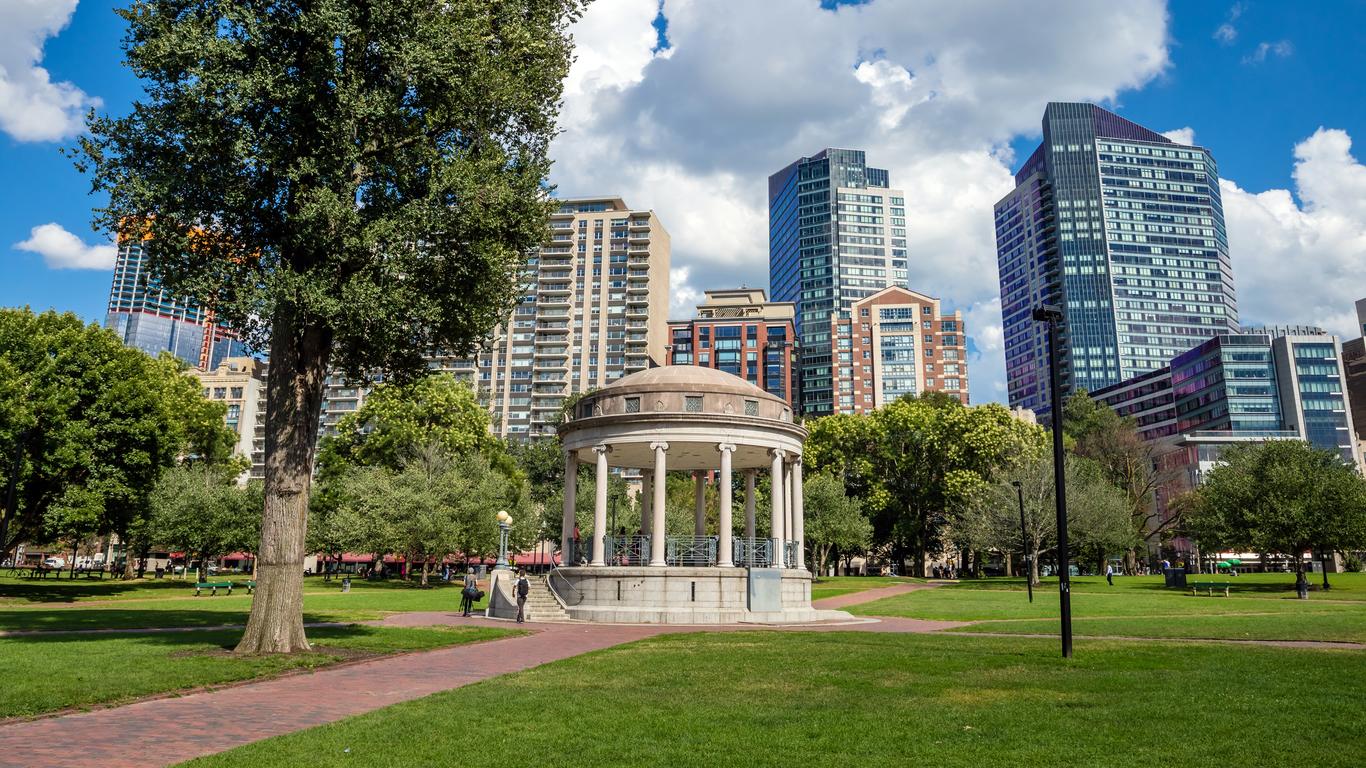Famously known as the oldest park in the United States, Boston Commons is both a public park for the community of downtown Boston, in Massachusetts, and a destination of heritage and culture of the entire nation. It has been the meeting for various gatherings, speeches, national events and celebrations, and is officially classed as a landmark of the city. Covering a grand space of over 200,000 metres squared, it invites people in their thousands every year, locals and tourists alike, to enjoy the beautiful green land and relax in a key historical destination of North America.
Boston Commons is a great place to walk in nature, as it lies at the foot of Beacon Hill and marks the end of the Freedom Trail, a four-kilometre pathway through Boston, which tours the major monuments and landmarks of the city. Visitors can also utilise the park for sports, with softball fields in the south-west of the Common and, in general, lots of wide space to play games and enjoy activities like football, hiking or jogging. Key features of the parkland include the Great Elm Tree, which is now a merely a plaque commemorating what was once a large tree of cultural significance, due to its repeated historical use as a defensive structure and hanging location. There are other memorials remembering local events, the 6-metre high Brewer Fountain, the Parkman Bandstand, still used for public concerts and performances, and the Frog Pond, which becomes an ice rink during the winter.
The easiest point in Boston Commons for visitors to reach is the Visitor Information Centre, which marks the end of the Freedom Trail, and can be reached via the city subway, which travels to the nearby station of Park Street. By car, visitors can follow directions to Tremont Street and park at the Boston Common Parking Garage, and there are also local buses navigating the surrounding area.
The history of Boston Commons dates back to 1634 when Puritan colonists bought the land from the original settler in the area, William Blackstone. They used the land to graze livestock until 1830, when it became a place of public hangings, including one of the Boston martyrs, Quaker Mary Dyer. Over time it became a gathering place for the community, hosting political protests, musical concerts and visited by such famous people as Martin Luther King, Judy Garland and Pope John Paul II.





